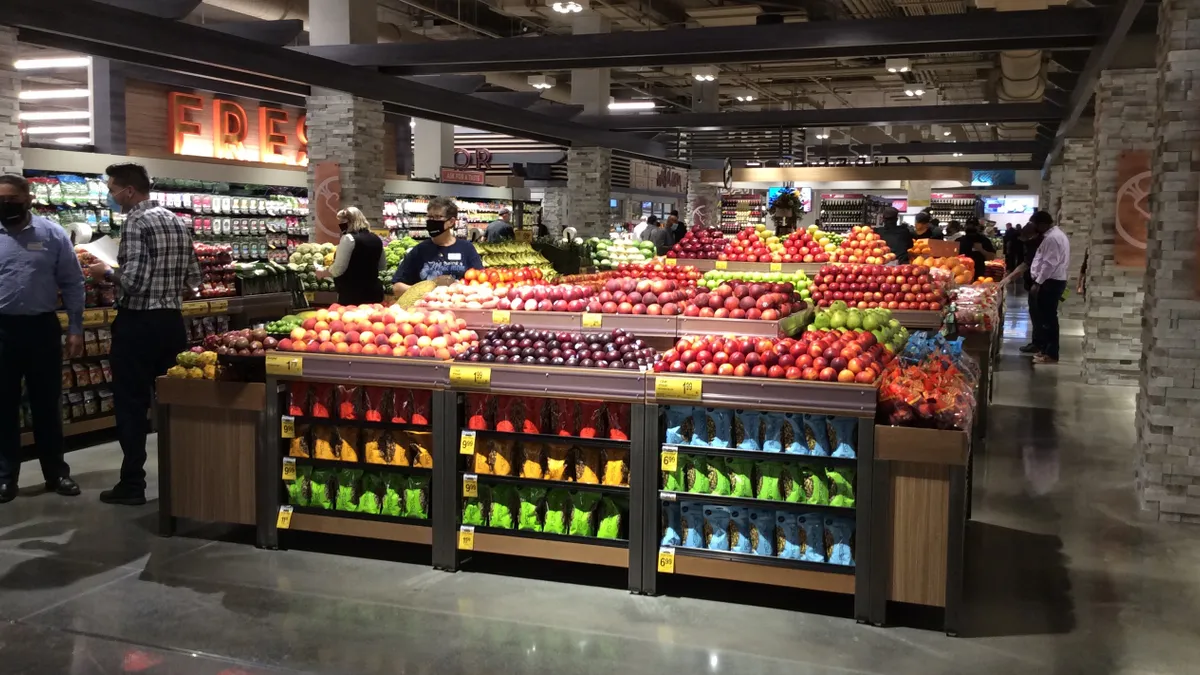Dive Brief:
- Food-at-home prices leaped 12.2% over the last 12 months — the quickest pace since April 1979 — according to Consumer Price Index (CPI) data for June released Wednesday by the U.S. Bureau of Labor Statistics (BLS).
- The food-at-home index rose 1% in June compared with the month before, down from the 1.4% increase recorded in May.
- Rapidly escalating food prices played a central role in pushing the overall rate of inflation to 9.1% in June, the highest level since November 1981.
Dive Insight:
The CPI statistics for June are a stark sign of just how deep an impact inflation is having on the cost of groceries — and emphasize the tight relationship between food prices and the country’s economic trajectory.
Fast-rising costs for food, gasoline and shelter together played the largest role in driving the nation’s inflation rate to a fresh four-decade high, according to the BLS. Five of the six key components of the food-at-home index recorded a monthly increase in June, which was the sixth month in a row during which the index was up by at least 1% overall.
Prices for cereals and baking products rose 2.1% in June compared with May, driven by a 5.3% increase in flour prices during the period. Dairy prices were up 1.7%, while costs for fish and seafood increased 0.5% and produce prices rose 0.7%.
Conversely, the food-at-home group that includes meat, poultry, fish and eggs recorded a decline of 0.4% as beef, veal and pork became less expensive while ham and poultry prices rose.
Sales patterns underscore the impact rising grocery prices are on shopping behavior. For example, meat sales were up 5.7% in terms of dollar volume in June on a year-over-year basis, but the number of pounds of meat people bought last month fell 2.7% by the same measure, according to data from 210 Analytics and IRI. Similarly, perishable sales rose 6.8% in June compared with the same month in 2021, but unit sales were off 4.5%.
“Consumers can cope with both moderate price rises over a long period, and sharp price rises for very short durations. Managing hefty inflation over a sustained time frame – which is where we are now – is much more challenging,” Neil Saunders, managing director of GlobalData Retail, said in emailed comments. “We are now at the point where consumers are starting to take more evasive action to reduce their expenses.”
According to GlobalData’s consumer panel data for July, shoppers have become more likely in recent weeks to trade down to less expensive grocery brands as inflation continues to eat away at their spending power. In addition, people are increasingly cutting back on purchases of non-food products, reducing travel to save gas and looking for bargains when they shop, per the firm’s findings.
The latest inflation figures underscore just how sharply the economic landscape has shifted during the past year. Food-at-home prices ticked up just 0.9% on an annual basis during the 12-month period that ended in June 2021 and were up 0.8% compared with the previous month.













